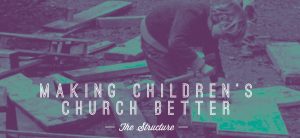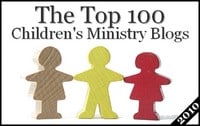I’ve taught a lot over the years on the structure of a children’s church.
I believe in it! It’s a place where kids are gathered corporately and worship, learn and fellowship. Those of you who have a Large Group/Small Group format can still benefit from this information as well as those who have a major emphasis on a children’s worship service – AKA: Children’s Church.
One day, while studying to teach on this topic once again at a conference, I realized that the children’s church service was a hybrid of several models. The Children’s Church has mix of the following elements:
- Education
- Inspiration
- Entertainment
Here are the three models:
The Education Class Model –
This model has been used for years and is like a mantra to classic and succesful educators:
- Tell them what are going to teach them – this is the icebreaker/opener that introduces kids to the lesson.
- Teach it to them – teach them using all the fun methods that you use.
- Tell them what you just taught them – review games and follow-up moments at the end of service (take-home papers or bulletins could also fit this heading).
The vaudeville Show Model –
I came across this a few years back after watching Duane Laflin speak about the psychological needs of an audience:
- Excitement – something that gets the show/service off to a fun and exciting start
- Introduction – welcoming the audience and helping them to feel comfortable with being there
- Identification – showing in an exciting way why you are all together or, preview your lesson
- Involvement – get the audience engaged… Invite people to participate – both corporately as well as individuals… Every kid wants to help
- Solid Content – This was the feature act – teach the “meat” of the lesson
- Confirmation – give the audience a chance to respond and let them leave feeling positive about what they just experienced – like an altar call, and a review. The kids should leave with a sense that they can put what you just taught them into practice.
The Intensity Model of a Children’s Ministry Setting –
I’ve used this for years to help structure how a childrne’s church should look:
- Kids are excited, rowdy and silly at the beginning of a class – match that with some controlled chaos… Fun games, exciting songs, silly or funny characters.
- About half way to two-thirds thru the class time is when the kids are at their most attentive – teach the most important things during this window… The main sermon, prayer time, worship times.
- As the class comes to a close, the kids will start to get rowdy again, so end with excitement elements… Review games, songs that relate to the topic, funny characters who need help from the kids in reviewing the lesson.
I hope you can see how each of these models kind of “morphs” together to create a good structure for a children’s church setting.



